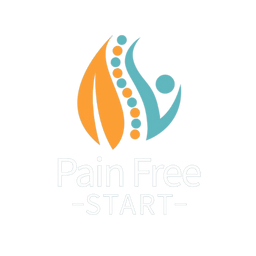Intro: Why Cold Plunging Is Everywhere Right Now
From pro athletes to wellness influencers, cold plunging is having a serious moment. Ice baths, cold showers, and plunge pools are filling Instagram feeds — often with bold claims about reducing pain, inflammation, and speeding recovery.
As a physiotherapist — and someone who personally starts most mornings with a cold shower and swims outdoors whenever I get the chance — I understand the appeal. I was first inspired by the work of Wim Hof, whose blend of cold exposure, breathwork, and mindset caught my attention about 5 years ago.
And yes — cold plunging can leave you feeling focused, alert, even invincible. But does it really help with pain, inflammation, and recovery?
Let’s look at what the science says, when it’s helpful (and when it’s not), and how it fits into a long-term plan for managing pain.
What Is Cold Plunging?
Cold plunging typically means immersing your body in cold water — usually between 10°C and 15°C (50°F–59°F) — for 2 to 10 minutes. It’s a form of cold water immersion therapy, used in sports medicine and wellness for decades.
It’s thought to:
- Reduce muscle soreness
- Calm inflammation
- Improve circulation
- Boost mental clarity
But is it just the shock factor that makes people feel better — or does it really help?
What Does the Science Say About Cold Plunging and Pain?
Short-Term Relief
There’s good evidence that cold water immersion can temporarily reduce muscle soreness — especially after intense exercise. It helps by:
- Constricting blood vessels (reducing swelling)
- Numbing nerve endings (reducing pain)
- Blunting the inflammatory response
This is why athletes often use ice baths after games or heavy training.
Long-Term Inflammation? Not So Clear
Cold plunging doesn’t address the root causes of long-term inflammation, like:
- Autoimmune conditions
- Chronic joint degeneration (e.g. arthritis)
- Lifestyle factors like poor sleep, stress, or diet
In fact, using cold therapy too frequently may interfere with beneficial adaptations — like strength or tissue repair. So while it can reduce pain signals, it doesn’t necessarily “heal” the underlying issue.
Does It Work for Arthritis or Chronic Pain?
Here’s where I get a bit cautious.
My take as a physio:
Cold plunging might help temporarily reduce pain or stiffness in arthritic joints or inflamed tissues — but it’s not a cure or long-term fix. Think of it more like one tool in the toolbox, not the whole solution.
It can:
- Calm flare-ups (some people find it helps with swelling or stiffness)
- Act as a short-term pain reliever
But it won’t replace:
- Movement-based rehab
- Strength building
- Lifestyle changes that support long-term joint health
Also, some people with arthritis or chronic pain may find cold exposure aggravating — especially those sensitive to temperature or with circulation issues.
When Cold Plunging Might Be Worth Trying
✔ After an intense workout
✔ For acute soreness or a minor injury
✔ As a mental reset (some say it helps mood and clarity)
✔ If you’re curious and want to experiment — and you feel good afterwards
When to Be Cautious or Avoid It
If you have:
- Cardiovascular conditions (cold shock can spike blood pressure)
- Circulatory problems (like Raynaud’s)
- Nerve-related pain that worsens with cold
- A history of cold intolerance
Always speak to your GP or physio first — especially if you’re managing chronic pain or any health condition.
Bonus Tips If You Want to Try It:
- Start with a cool shower or bath (even 15–16°C is enough to start)
- Limit time to 1–5 minutes if new to it
- Focus on how you feel after — if you feel worse or more stiff, back off
- Combine with gentle movement or physio for better outcomes
You may also find this blog of interest;
Heat or Ice for Pain Relief? When to Use Cold and Heat Therapy for Injuries and Stiffness
Do Supplements Really Help Arthritis? What Works & What’s a Waste of Money
Final Thoughts: Cold Plunging Isn’t Magic — But It Can Have a Place
Cold plunging isn’t a miracle cure for pain or inflammation — but it can offer short-term relief and be part of a broader recovery plan. For some, it’s empowering. For others, it’s unnecessary.
As always, the goal is sustainable, evidence-based strategies that help you feel and move better long-term — and cold therapy might be one of many tools that support that journey.
Take care, Helen
Helen Manders BSc (Hons) MCSP HCPC
Chartered Physiotherapist Since 2001



